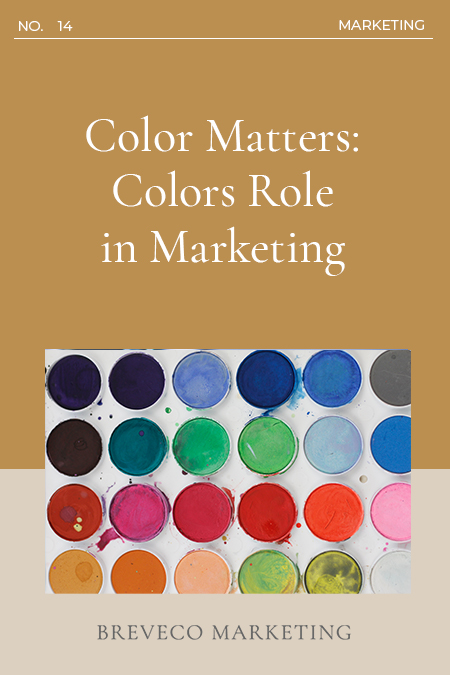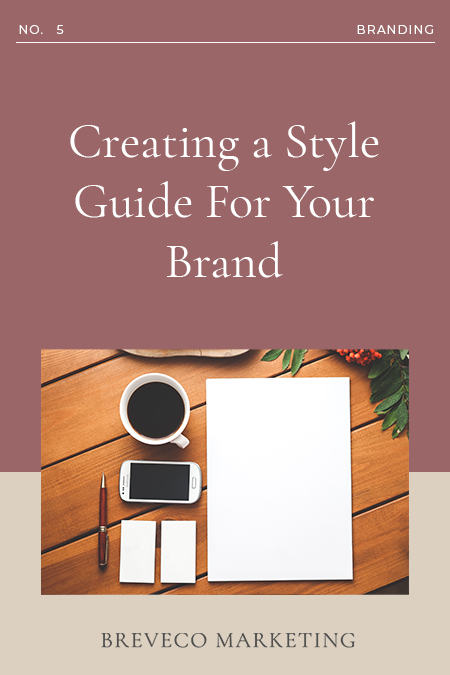
Color Matters: Colors Role in Marketing
Color Matters: Colors Role in Marketing
Have you ever felt blue? Or maybe green with envy? Or have been so optimistic your friends describe you as “sunshine”? These phrases may be equated to the study of color psychology. Color Psychology is the study of how different colors affect human behaviors. Why does this matter to us as entrepreneurs?

If we know what certain colors communicate , then we’ll be able to use them wisely in our branding and marketing.
Before we dive too deep into color, let us preface. The truth is, you won’t finish this article and change your brands colors to the best colors for marketing––those don’t exist. The hope is that you complete this blog and understand the impact and importance of color usage and be inspired to do more research on your own. Also, like many of our other blogs, we want to encourage you to be thoughtful about what your brand communicates and who is your audience. Once you know your target audience and desired message, choosing a few colors to communicate that message well should be a piece of cake.
Why are we talking about colors? Partially because 85-90 percent of buyers claim that color plays an important role in their purchases. Why? Because color speaks largely to a brand’s personality and identity. For example, while remodeling your home, you may want to make a single stop for quality home improvement items, where do you go? Maybe Lowe’s topped the list. It’s bold blue logo communicates trust, dependability and strength. Let’s dive into some other colors and see what they’re trying to communicate.
Red
The color red creates a sense of power and urgency. Like a stop sign or a clearance sale sign––this color serves as a powerful and attention-grabbing tool. Red communicates energy and can physically stimulate the body by heightening your heart rate and blood pressure. It also encourages appetite––which is why it is often by many fast food companies.. Red is associated with movement, excitement and gets people to act. Need an eye-catching call-to-action button on your website? Maybe red is the way to go.
Blue
While red conveys aggression, blue delivers quite the opposite approach. Blue conveys peace, reliability and tranquility. Blue stimulates productivity, and brands commonly use this color to promote trust. It is often viewed as a positive color that may invoke security and responsibility. Have you ever thought about why billions of people trust Facebook with valuable information? Or why many credit card companies are blue [Chase, American Express, Visa, etc.]? If you’re looking for your product or service to promote trust and peace, blue is the color for you.
Green
Green is often associated with money, health, and nature. Lighter shades of green can even be viewed as calming and can stimulate harmony. It is often used by brands to promote relaxation and oftentimes promote environmental issues.
Purple
This color has been traditionally associated with wisdom, royalty and prosperity. Studies show that purple can stimulate problem-solving and creativity in the brain. It is commonly used in brands that promote beauty and anti-aging products.
Yellow
Yellow is the spokes-color of happiness! It’s viewed as a very optimistic color that often grabs attention and invokes excitement. Many studies have shown that yellow actually releases a chemical in your brain called serotonin––the chemical that positively stimulates your brain.
Gray/Black
These colors are similar in that when used too frequently, it can become depressing or mundane. But black and gray do have a place in your branding! Black can communicate confidence, boldness and authority while gray conveys practicality and solidarity. When used appropriately black and gray both deliver strong messages.
White
While white can look plain and boring, it communicates cleanliness and minimalist values. White can also be associated with purity, security and even neutrality. White space can also help encourage creativity.
Pro-Tip: Do a little A/B testing and try different color options to see what colors suit your brand’s needs the best.
We love putting out this content and really do hope it’s helpful. Our heart is to help you and your business become more successful, even if that’s talking about something as small [yet as impactful] as color. If this blog will help you create an incredible color scheme for your business that conveys exactly what your brand is about, then we’ve done our job. Also, if this subject is scary and overwhelming, we’re here to help with that as well. We’ve created many logos and other branding materials for clients and it’s an important part of what we do. If you need the help, we’re here for you.


